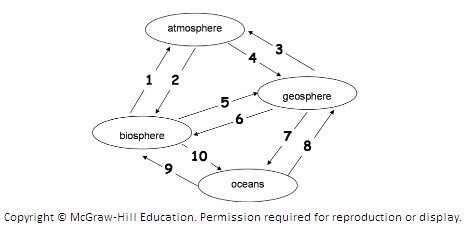What is a floodplain? How does it form?
What will be an ideal response?
A floodplain is the land surface adjacent to the channel constructed by the river, and it gets inundated by floods. Flood waters deposit sediments, with coarsest particles deposited nearest to the channel reflecting waning stream power. The area nearest the channel is often higher in elevation and termed a natural levee.
You might also like to view...
In which of the following locations do lenticular clouds typically form?
A. downwind of a mountain range B. upwind of a mountain range C. far away from a mountain range D. about 10 km above a mountain range
When an alpine glacier flows through a valley, it makes the valley wider by
A. plucking. B. abrasion. C. deposition. D. dissolving.
The following diagram illustrates the Carbon Cycle. Each arrow represents the transfer of carbon from one component of the Earth system to another. For example, arrow 1 represents the transfer of carbon from the biosphere to the atmosphere. Match the answers below to the number on the diagram. Match the lettered answer to number 9 on the diagram.
Match the lettered answer to number 9 on the diagram.
A. Weathering B. Fossil fuel formation C. Photosynthesis D. Shell formation E. Respiration
The process by which energy is derived from solar radiation that is used by certain organisms to form organic matter is called ________
A) photosynthesis B) chemosynthesis C) upwelling D) visible light E) biomass